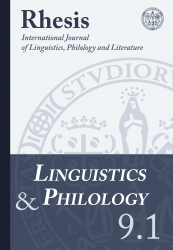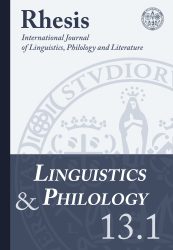 Linguistics and PhilologyVol. 9.1 - 2018
Linguistics and PhilologyVol. 9.1 - 2018Table of contents
| p. 5 | Tra derivazione e flessione: il caso del suffisso -éri in sardoImmacolata Pinto Article |
| p. 27 | Nomi di animali nei gerghi storici italiani: qualche appuntoMatteo Rivoira Article |
| p. 44 | Il discorso sulla crisi economica nella stampa italiana (2007-2017)Paolo Orrù Article |
| p. 69 | Sui limiti della correzione linguistica congetturale. Alcuni casi di filologia sardaGiancarlo Porcu Article |
| p. 94 | Il Sardo a Orgosolo: variazioni d’uso e competenzeGiovanna Corraine Article |
Tags: conjecture, dialects, diasystem, discourse analysis, economic crisis, Europe, Giancarlo Porcu, Giovanna Corraine, historical linguistics, Immacolata Pinto, Italy, jargon, language competences, language contacts, language variants, lectio difficilior, linguistic contact, Matteo Rivoira, nominal inflection, Paolo Orrù, Romance languages, Sardinian, Sardinian language, Sardinian lexicon, Sardinian philology, word formation, zoonyms

